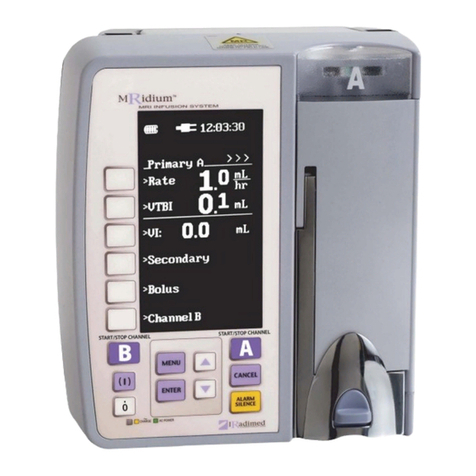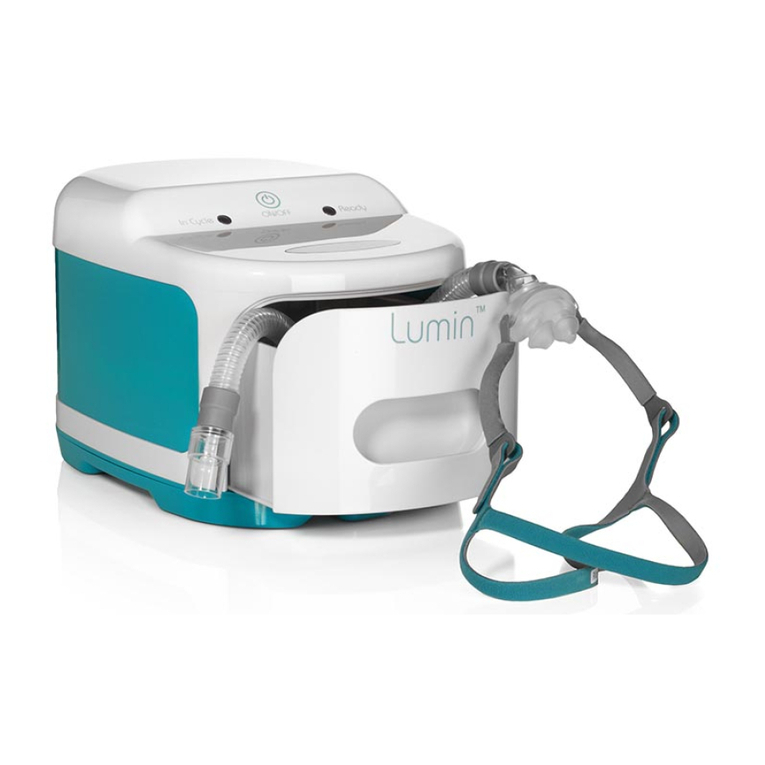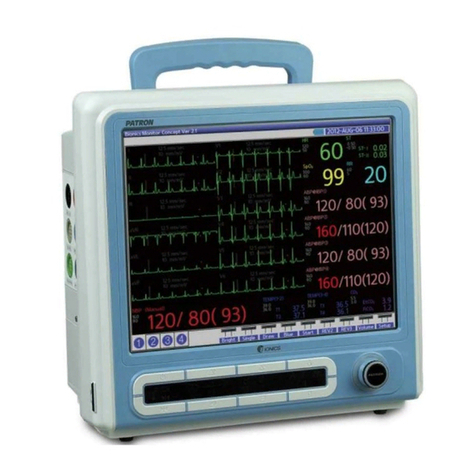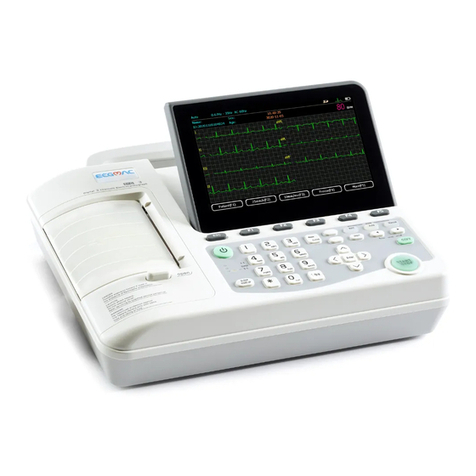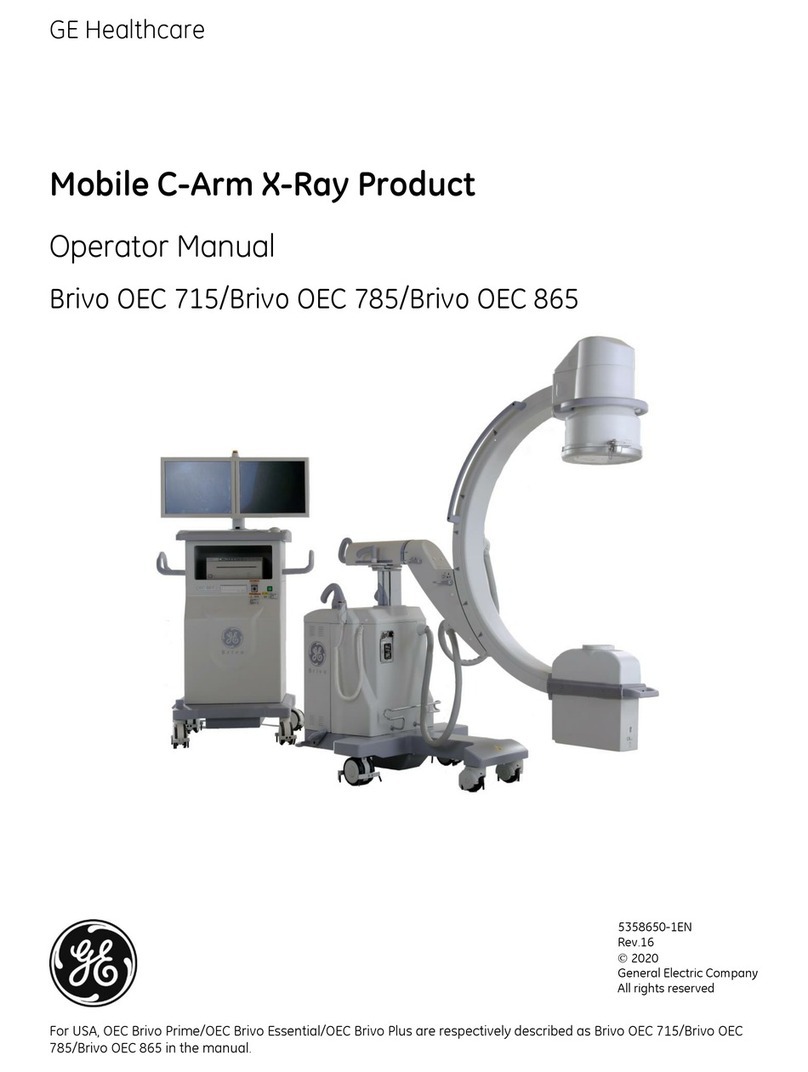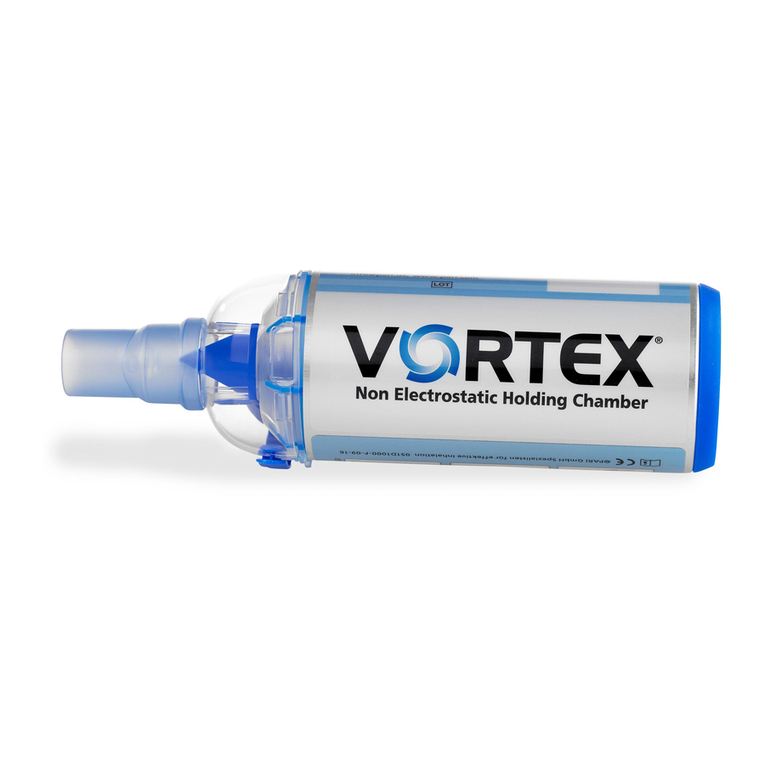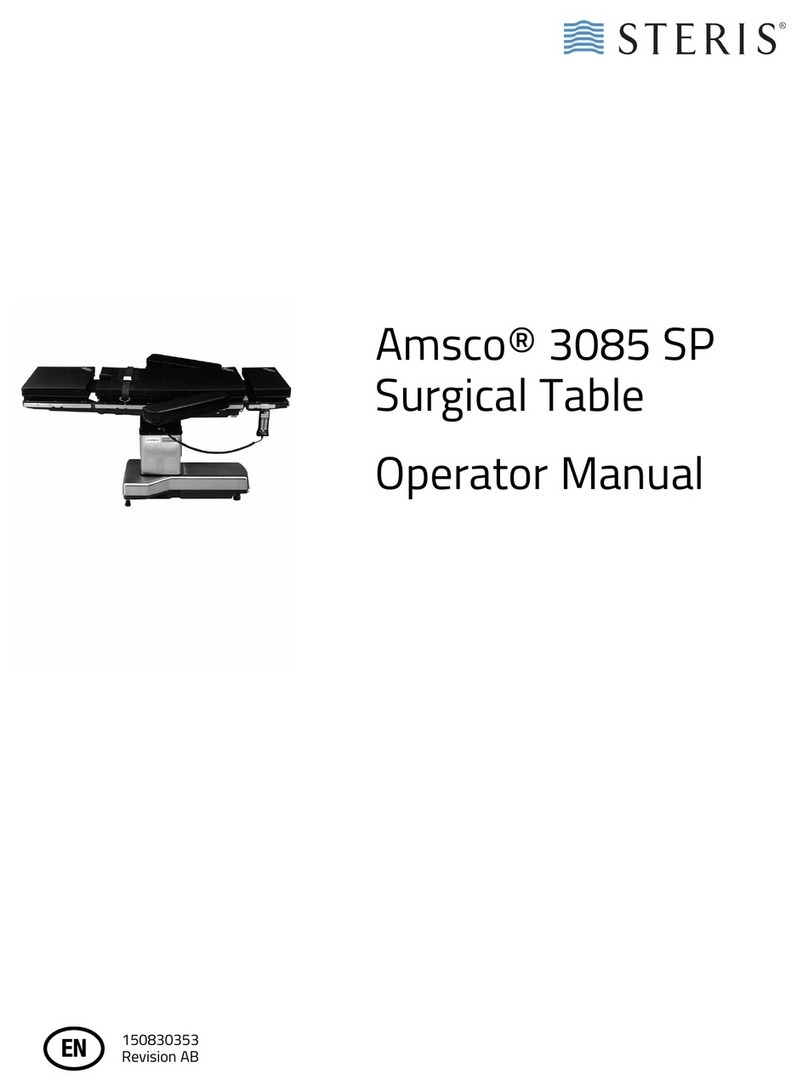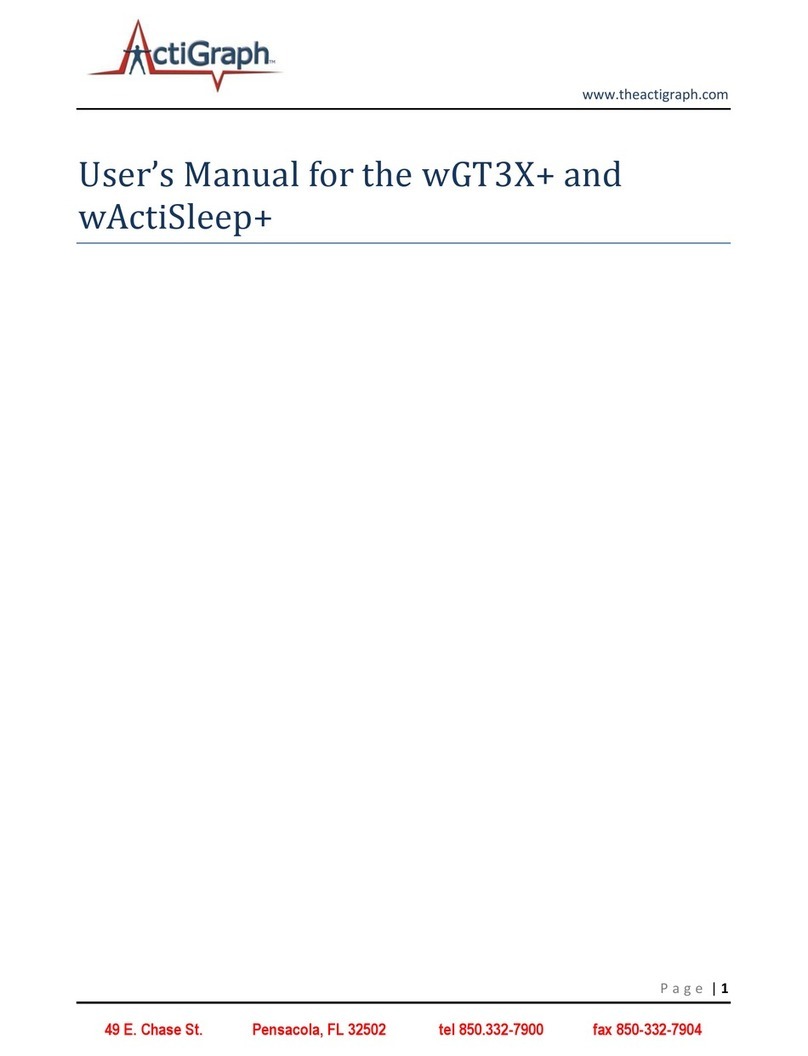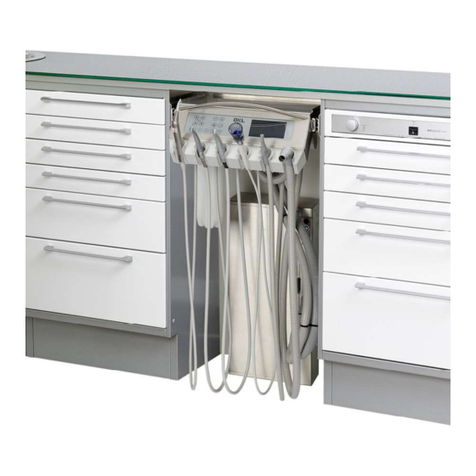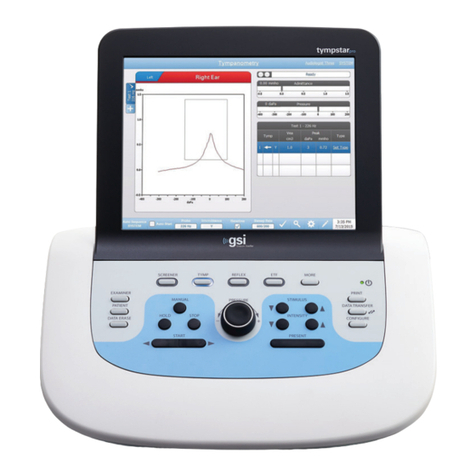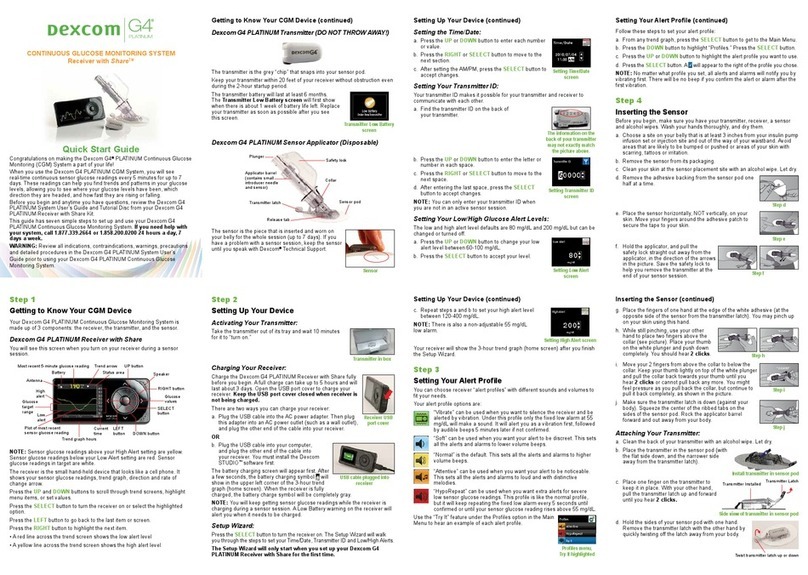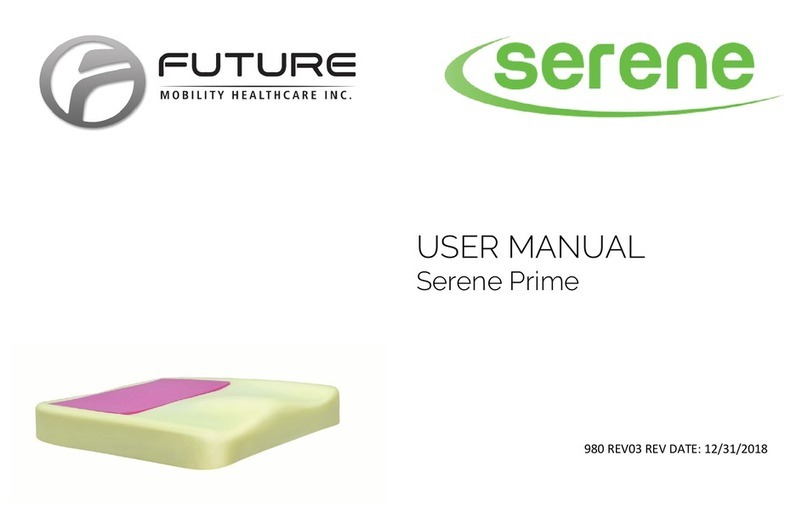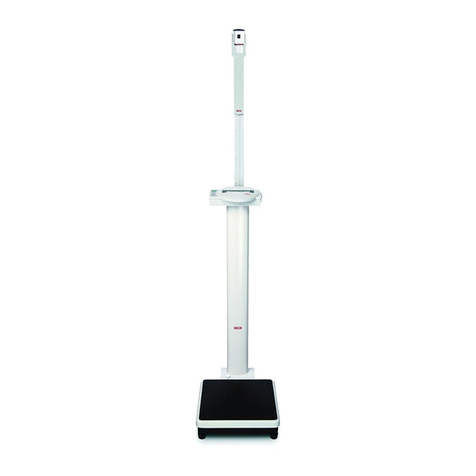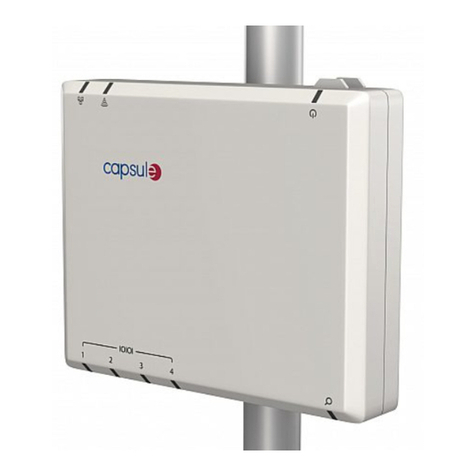chinesport FISIOLASER IRD User manual

2 / 39
FISIOLASER IRD/IRD 2
INDEX
INTRODUCTION............................................................................3
PROPERTIES OF LASER LIGHT............................................................3
COMPONENTS OF LASER SYSTEMS..................................................4
Beam diameter........................................................................................5
Beam divergence....................................................................................5
Parameter indicators...............................................................................5
Method of treatment...............................................................................5
Display ...................................................................................................5
LASER RADIATION FEATURES...........................................................5
INFORMATION ON THE MANUAL...........................................8
WRITING CONVENTIONS.....................................................................8
WARRANTY....................................................................................8
IN GENERAL...................................................................................9
PRELIMINARY NOTES................................................................9
UNPACKING ............................................................................................9
SETTING UP.............................................................................................9
ELECTRICAL CONNECTION ..............................................................11
SAFETY KEY AND SMART-CARD.....................................................11
LIGHTING OF THE DEVICE ................................................................12
ACCESSORIES .......................................................................................13
DESCRIPTION OF THE EQUIPMENT ....................................14
CONTROL PANEL.................................................................................14
FRONT PANEL.......................................................................................14
BACK PANEL.........................................................................................15
INDICATIONS...............................................................................15
CONTRA - INDICATIONS..........................................................15
HOW TO USE THE EQUIPMENT.............................................16
DESIGNATED USE.......................................................................17
BEST USE................................................................................................17
SET UP............................................................................................18
DISPLAY.................................................................................................19
PROBE.....................................................................................................20
VARIOUS ................................................................................................23
LANGUAGE............................................................................................24
DIRECT PROCEDURE................................................................24
LOADING PROGRAMMES........................................................25
APPLICATION OF THE THERAPY..........................................26
LASER TEST...........................................................................................28
SETTING UP PROGRAMMES...................................................28
MAINTENANCE ...........................................................................29
TECHNICAL PROBLEMS ..........................................................31
ELECTROMAGNETIC INTERFERENCE ..............................32
TROUBLESHOOTING CHART ................................................33
TECHNICAL SPECIFICATIONS...............................................34
APPENDICES.................................................................................36
Appendix A ENVIRONMENTAL CONSIDERATIONS.......................36
Appendix B LABELS...............................................................................37
Appendix C List of programs...................................................................39
Appendix D Electro-magnetic compatibility tables .................................41

3 / 39
FISIOLASER IRD/IRD 2
INTRODUCTION
We will start by explaining the physical properties of laser in order to provide a
better understanding of how it works in a medical context.
Basically, laser is a system whereby energy contained in some substances is
transformed into electromagnetic radiation when stimulated electrically.
Laser beam electromagnetic radiation can be produced in different parts of the
spectrum, including the visible spectrum, the ultraviolet spectrum (UV), the infrared
spectrum (IR), etc.
Before describing the laser process, we should explain some basic electromagnetic
wave terminology:
-Wavelength (
)
- Frequency (
)
- Period (T)
- Speed of light (c)
- Refraction index (
)
The frequency (
, ni) is the number of oscillations the wave makes per second.
The formula relating these two parameters is :
c = x
The minimum time interval between two successive points with the same phase is
the period (T).
When the electromagnetic radiation (light) passes through a material with a
refraction index of
its velocity (v) is less than the velocity of the light in a
vacuum (c), and is given by this equation :
v = c/
This equation is used as the definition of the refraction index
(rho):
=speed of light in a vacuum/speed of light through the material= c/v
The refraction index of gases, including air, is generally considered to be the same
as that of a vacuum
0 =1.
The refraction index of many transparent materials in the visible spectrum is between
1.4 and 1.8. It is higher in the infrared (IR) spectrum and is between 2.0 and 4.0 .
PROPERTIES OF LASER LIGHT
“Normal light” (from the sun or a lamp) comprises different wavelengths, radiating
in all directions.
The phases of the different waves emitted from the source are not related to one
another.
On the other hand, laser radiation has some properties that do not exist in other types
of electromagnetic radiation :
1) Mono-chromaticity: means that the laser has only one wavelength, and therefore
only one vibration frequency. It also has only one colour defined by the active
medium that produces it. In order to understand the term, we will look at “white
light” which is what the mind understands when all the colours of the spectrum are
seen together. When white light is passed through a prism it separates into all the
component colours.
On the other hand, the laser beam is composed of only one of these colours .
2) Coherency: is the property whereby all the photons emitted vibrate in phase
concordance .
The light from an incandescent lamp for example, is composed of different waves.
They propagate randomly without any order between their phases or between their
wavelengths.
Laser radiation on the other hand is composed of waves with the same wavelength
that leave at the same time and keep their phases constant in the direction of
propagation.
3) Collimation: radiation is emitted from the laser in one direction only, and is
diffused with a definite angle of divergence (q) .
The angular diffusion of a laser beam is very small if compared to other sources of
electromagnetic radiation, since the divergence is in the order of milli-radians.
The divergence angle is the complete angle of opening of the laser beam (basically
its width).
The formula relating radians and degrees is :
360°= 2Radians
(1 radian =57,3 °; 1 milli-radian = 1 mrad=0,057 ° )
The divergence of laser radiation is in the order of milli-radians.
The beam is practically always parallel and laser radiation can propagate for very
long distances.

4 / 39
FISIOLASER IRD/IRD 2
The laser beam has actually been used to measure the distance from the earth to the
moon, with an error margin of less than a centimetre.
4) Brilliance: is the power emitted per surface unit.
This equipment gives the highest intensity possible per space unit. The space can be
as small as a few microns.
COMPONENTS OF LASER SYSTEMS
In general, lasers comprise four structural units :
1. an active laser medium,
2. an excitation mechanism (source of energy, called "pump" source)
3. an optical cavity, comprising two mirrors and the space in between them;
4. an output mechanism;
5. and obviously a mechanical support structure.
Semiconductor diode lasers:
Diode lasers are all made of semiconductor material and have the typical electrical
properties of electric diodes .
Therefore, diode lasers have other names such as :
–semiconductor lasers: according to the material that they are made of,
–junction lasers: when they are made of a pn junction,
–injection lasers: when electrons are injected into the junction by applying
voltage.
Even though all these devices operate close to the infrared spectrum, nowadays laser
diodes are also made with visible light.
One useful feature is that many can be adjusted by changing the current applied, the
temperature, or by applying an external magnetic field.
The semiconductors can be used as a small and highly effective source of photons
which can be pumped using a variety of techniques.
They include pumping with other optical sources (photo-pumping), pumping with an
electron beam, or pumping with a pn junction.
The most common technique is by the p-n junction.
The pn junction refers to a “p” type semiconductor attached to an “n” type.
This junction conducts electricity in a preferred direction.
The increased directional conductivity is the normal mechanism that all diodes and
transistors in electronics work on.
The distribution of the energy bands in the junction is the basis of the laser diode
action.
The highest level of energy occupied by the electrons is called the Fermi level.
When the positive pole of the generator is connected to the pside of the p-n
junction, and the negative pole of the generator is connected to the nside, a current
runs through the p-n junction changing the population of the energy band.
The layers of semiconductor material are placed in such a way so as to create an
active region in the pn junction where photons are generated by a recombination
process.
The base structure of a simple laser diode is shown in the following figure .
Figura a: outline structure of a laser diode .
by A. Vasta: i lasers terapeutici...Marrapese
ed.. Roma 1998.
A laser generator can be connected by a metallic layer to the external surface of a
stack of layers.
The side of the crystalline semiconductor is cut in such a way as to allow it to be
used as an optical cavity mirror.
The voltage is applied to the metal on the external layers of the semiconductor.
Since the laser diode is so small, it has a special covering that means it can be easily
handled.
There are different types of covering, but the standard one is similar to transistor
containers. It incorporates a collimated lens that is essential for the creation of a
usable beam (see figure).
Special types of laser diodes have been developed to get high power laser diodes.

5 / 39
FISIOLASER IRD/IRD 2
These special diodes emit synchronised radiation: an output power of a few Watts
can therefore be obtained.
Diode lasers have numerous advantages :
highly effective (more than 20 % of the input energy is emitted as laser
radiation)
high reliability and safety
–long lasting (about 100 years estimated in continuous operation)
–low cost (laser diodes are manufactured using mass production techniques
in the electronics industry)
–ability to carry out direct modulation of the emitted radiation, and
control the electric current that passes through the pn junction.
The radiation emitted is a linear function of the current and can reach modulation
rates in the order of GHz (!).
Laser diodes are widely used in communication technology, in compact disc readers,
in optical readers, in printers, and in physical therapy and analgesic therapy.
They are also now being used in ophthalmology, to measure distances, as sensors,
and in fax communications.
Most diode lasers can operate in continuous waves.
The most widespread diode is the Gallium-Arsenide that emits at 905 nm .
Wavelength
808 nm –905 nm
Beam diameter
5 mm to 10 mm from the tissue
Beam divergence
9°
Parameter indicators
Frequency –Treatment time –
Energy supplied (J) –Emission
level
Average output power
According to the number of
diodes from 25mW to a few
Watts (500mW limited class
3B)
Peak power
Up to 800 Watts
Pulse duration
100 nsec.
Number of diodes
1 –8 or more
Emission frequency
Up to 10,000 Hz
Type of emission
CW –Pulsed
Guide light
He-Ne (red) or green
ANSI safety standard
3B and 4
Method of treatment
Single-multiple diode handpiece,
scanning
Display
Backlit LCD
Areas of use
Dermatology
Laser injections
Sports medicine
Neurology
Dentistry
Ophthalmology
Orthopaedics Rheumatology
Analgesic therapy
Table 1 : Main features of GaAs lasers (IR) used in medicine.
By A. Vasta: therapeutic lasers.Marrapese pub. Rome 199.
LASER RADIATION FEATURES
Laser bean parameters
1. Frequency: this determines the average power of the laser and therefore the
capacity of therapeutic lasers to penetrate tissue.
The higher the frequency, the greater the penetration energetic density
Clearly therefore, choosing low frequencies for analgesic purposes and high
frequencies for anti-inflammatory purposes does not make scientific sense .
2. Pulse duration :
1. continuous emission: radiation produced by lasers is emitted without any
pauses between the pulses.
2. pulsed emission: (see following paragraph)
3. Average power (Pm): this is a function that varies according to the size of the
pulse (peak power Pc), the duration of the pulse (ti), and its frequency (f)=(number
of times per second that a pulse is emitted).
Average power is calculated as follows :
Pm = Pc x ti x f
Therefore, you can calculate for example, that with a laser with peak power of 20
Watts, a pulse duration of 200 nsec (which is normal for an IR laser) and a
frequency of 5 KHz = (5000 pulses/sec), the average power is :
Pm = 20 W x 200 nsec. x 5 KHz
= 20 W x 200.10 -9 sec. x 5 x 103
= 0,02 Watt = 20 mWatt

6 / 39
FISIOLASER IRD/IRD 2
The evolution towards pulse lasers is very favourable from the therapeutic point of
view and for the average power, since laser penetration into the body is improved.
The total energy applied is therefore much higher than with He-Ne laser.
4. Peak power: is the maximum power that a single laser pulse can reach.
Above a certain value of between 10 and 20 W, the increase in peak power exceeds
the critical energy threshold, saturates the superficial layer of the epidermal tissue,
and causes burning of the skin (thermic effect).
It can be harmful to the tissue.
The power of laser beams (both therapeutic and surgical) is higher at the centre of
the beam and falls off towards the edges in a bell shaped curve (Gaussian).
The power weakens towards the edges of the beam with lesser effects on the tissue
hit.
This is also true in laser surgery (which explains less pain and lower inflammation
when surgical procedures are done by laser instead of normal surgery).
This is called the “alfa effect”.
Therefore the “low power” part of the beam (in laser therapy “cold”) is the reason
that there is less pain and inflammation in the injuries.
Figure b: peak power and critical threshold of power in the therapeutic laser effects. Skin
becomes saturated with energy above the critical threshold and can only be permeated at lower
peak power. If power higher than 20 Watts is used, it can lead to photothermal effects which give
rise to skin burning.
By A. Vasta: therapeutic lasers….Marrapese Pub. . Rome,1998.
Figure c: illustration of a typical Gaussian distribution of laser beam power. The energy density is
high at the centre of the beam (surgical laser) and decreases gradually towards the edges
(therapeutic effects).
By: A.Vasta: Therapeutic lasers. Published by Marrapese. Rome,1998.
5. Quantity of radiation (energy density) : The quantity of radiation is the most
important parameter in low power laser therapy. It is even more important than the
type of laser used (visible or invisible, pulsed or continuous) (see paragraph 3).
The quantity is measured in Joules (J) per area treated (J/Area), or more commonly
per cm2(J/cm2).
It is important to make both types of calculation of the amount, according to whether
the laser has to be applied to specific areas (trigger, acupuncture points, local areas,
etc.) or to larger tissue areas (sores, ulcerous areas, etc.).
One Joule of energy is equal to 1 Watt x second, i.e. it represents the energy
generated when 1 Watt (W) of power radiates for 1 second (s) :
J = W x sec.
The amount of radiation is the amount of energy that is transmitted into the tissue.
It is very important to know if this energy is going to be transmitted through a small
area (lets say 1 mm2) or through an area that covers more than a few cm2of tissue.
Therefore in the treatment of areas like sores, ulcers, etc. it is better to express the
amount in the form of density of energy in J/cm2.
Since 1 J = 1 W*sec, the amount of radiation D can be calculated in the following
manner :

7 / 39
FISIOLASER IRD/IRD 2
P (W) x t (s)
D (J/cm2) = -------------------
A (cm2)
Where D = amount of laser (J/cm2)
P = power of laser transmitted to the tissue (W), or the average power
(mW/1000),
t = radiation time (s)
A = surface area treated (cm2)
The treatment time necessary can also be calculated from this :
D(J/cm2) x A (cm2)
t (sec) = -----------------------------
P(W)
In order to calculate the exposure time needed to treat a certain tissue area (A), the
average laser power must be converted into Watts: e.g. laser power of 15 mW emits
15/1000 = 0.015 W.
If 1J = 1Ws, then 1W= 1J/s.
Therefore if a laser has 15 mW of power, it emits a laser energy of 0.015 W = 0.015
J/s.
In 10 sec the emission equals 10 x 0.015 = 0.15 J.
Class 3B lasers, emitting an average output power of 60 mW can release an amount
of 2 J in 33 seconds; while a class A laser, emitting a power of 3 mW, requires 11
minutes and 8 seconds to release the same amount (2 J).
This means that the class 3B lasers have a distinct advantage over the others as the
treatment time is significantly reduced.
If a GaAs laser is set up to work on low frequency single pulse mode, its average
power is very low.
In order to directly compare the various pulsed model lasers, their output energy
(Ju)/pulse and their pulse/second (Hz) frequency must be noted by the
manufacturers.
The average power of a single pulse laser depends on its frequency (F), and the
energy/pulse ratio (E/i), as shown in the following table of a GaAs laser with
different frequencies :
(The power in mW is calculated as Ei x F/1000).
For example, if a 10000 Hz pulsed laser emits 5 Ju/pulse, its average power is 10000
x 5 / 1000 mW = 50 mW.
Generally single pulsed lasers are ineffective if the pulse frequency is less than 1000
Hz.
For example, a laser with a pulse energy of 1 Ju and a pulse frequency of 1 KHz
(=1000 Hz) has an average power of only 0.1 mW. If an area of cm25x5 needs a
laser amount of 1 J/cm2, the exposure time should be the following:
D x A 1 x 25
t = ------------ t = --------------- = 250000s
P 0.0001
D= amount required (J/cm2) ;
A= area treated (25 cm2);
P = average power (0.1 mW=0.0001W)
therefore t = 4167 minutes.
This shows that a laser with an average power of 0.1 mW is not practical for laser
therapy.
It also shows that you at least need to know the average power (or the pulse
frequency and the power/pulse ratio) of the laser in order to calculate the radiation
amount needed to provide effective treatment.
The following concepts are also important in order to gain optimal therapeutic
benefits in laser therapy:
1. For best bio-stimulation effects (in treatment of sores, burns, bruises, etc.) the
radiation dose has minimum and maximum limits. The optimal amount is
between these limits. If the amount is too low, the treatment may not be
effective, if the amount is too high the treatment may be either ineffective, or
provoke negative effects.
2. The bio-stimulating effect is cumulative: suitable, repeated amounts given at
relatively frequent intervals give a cumulative effect. Small, repeated amounts
given at 1-7 day intervals provide as powerful an effect as if the same amount
of radiation was given in one treatment session only.
The optimal weekly radiation amount for He-Ne laser therapy seems to be about 1
J/cm2.

8 / 39
FISIOLASER IRD/IRD 2
With a laser that emits an average output power of 3 mW, 333 seconds/cm2 are
necessary. If the average power is 60 mW, 16.5 seconds/cm2is necessary.
3. For the best results on acupuncture points, the amount recommended by the
Soviet literature is for about 0.1 J/Acupuncture point.
With a laser that radiates an average output power of 3 or 60 mW, 33 or 1.65
seconds/AP point respectively would be necessary
INFORMATION ON THE MANUAL
This document provides valuable information regarding the installation, set up and
use of FISIOLASER IRD series .
It is a useful and essential reference guide for the user.
Read the contents of the manual carefully before installing the equipment and keep
it on hand at all times for future reference.
It is of vital importance that you strictly adhere to the recommendations contained
within the manual in order to avoid malfunction, which may cause damage to the
equipment and consequent annulment of the validity of the warranty.
Furthermore, in order to obtain the highly efficient technical service available from
the manufacturer, it is essential that any handling of the equipment be in accordance
with the instructions provided.
N.B. The Therapy Application Manual is available upon request.
WRITING CONVENTIONS
Underlining - Certain sections of the manual have been underlined in order to
highlight their importance.
Notes
These contain important information and useful tips for operating the equipment
CAUTION
The CAUTION message appears before operations, which, if not correctly
performed, may cause damage to the machine and/or its accessories.
! WARNING !
This signals operations or situations, which, if unknown to the operator, or
incorrectly carried out, may harm the operator..
WARRANTY
CHINESPORT SpA guarantees the quality of its products for a period of twelve
months from the date of purchase, when information contained in this manual
regarding installation, use and maintenance is strictly adhered to and the warranty
coupon is returned within 15 days of purchase.
The guarantee covers the replacement of faulty parts.
The warranty does not however, include the replacement of the equipment.
The warranty does not cover any malfunction or damage caused by :
-Incorrect connection and installation
-Incorrect use due to non-compliance with instructions contained in this
manual
-Use of the machine in environmental conditions which do not conform with
those specified for the product
-Improper or inadequate maintenance
-Unauthorised opening of the outer casing
-Tampering or unauthorised modifications
-Use of non-original accessories
CHINESPORT SpA registered offices provide the warranty .
Before contacting technical service, detect the "SERIAL NUMBER" on the
product label, or the number of the DDT / invoice. His identification saves time
and improves the quality of the intervention.
The equipment in need of repair in the Chinesport must expose on the shipping
packing the "AUTHORIZATION NUMBER" to require toTechnical Assistance,
its identification saves time and improves the quality of the service.
You should insure the postal package.
Before sending the machine back for suspected malfunction, we recommend that
first you carefully consult sections regarding MAINTENANCE and
TROUBLESHOOTING of the manual, as a large part of the problems and faults are
usually due to inadequate maintenance or small technical problems which can often
be easily solved by the user himself.
A mail to mail address assistenza@chinesport.it or a simple telephone call to the
CHINESPORT Technical Service department 0432.621699 can often solve any
difficulties you may encounter.

9 / 39
FISIOLASER IRD/IRD 2
CAUTION
The customer is responsible for any damage
caused by incorrect packing of the equipment
when returning it to the manufacturer.
We therefore recommend that
you use the original packing materials.
When re-packing the equipment for return to the manufacturer, proceed as follows:
-Unplug the machine and any connections, devices, applicators etc;
-carefully clean and disinfect all parts of the machine and accessories which
have been in contact with patients .
any equipment which the technical department does not consider hygienic
(Italian law T.U.S. 81/2008 on safety in the workplace) will not be
accepted;
-disassemble accessories and any mechanical supports;
-use original box and packing materials;
-attach to the pack the documents that will be supplied by CHINESPORT
Technical Assistance. Please note the reasons for the assistance request, and
the type of fault or malfunction: this information will greatly assist us in our
technical inspection and notably reduce repair times.
IN GENERAL
CHINESPORT SpA has recently developed a complete series of apparatus,
accessories and equipment, designed and manufactured according to the highest
standards of quality, making use of the latest technology and fully adhering to
current directives and norms
Particular attention has been paid to the design, easy operation, function and safety
of the equipment and the final result is this modern, compact unit, which offers an
extremely logical operative sequence supported by a clearly legible display .
A wide range of therapeutic applications, and guaranteed patient and therapist safety
ensure that FISIOLASER IRD-series equipment is of the highest quality.
The equipment FISIOLASER IRD-series were planned and built in manner that
their use, if it happens at the conditions indicated, doesn’t compromise the health
and safety of the patients, of the users and of third, taking into consideration the
benefit to the patient.
Such equipment are not bound to diagnosis, prevention, monitoring, compensation
of injury or handicap, substitution or modification of the anatomy, control of the
conception, support / vital support of functions but allow to treat special pathologies
and to reduce the illness.
A special intervention is not required in the event of failure of the medical device ,
but just a normal maintenance / repair .
PRELIMINARY NOTES
UNPACKING
FISIOLASER IRD-series equipment is specially packaged for transport in a single
pack complete with filling which has been specifically studied for safe
transportation and storage.
To remove the equipment from the pack, place the box on a smooth, flat surface.
Open the top of the box and remove the polystyrene filling.
Be very careful when removing the contents of the pack.
The unit and accessories are wrapped in transparent sheets of polyethylene
protection and contains the following :
the User’s Manual;
n.1 mains power supply cable;
n.2 f spare fuses (see technical specifications) ;
n.1 laser probe ( see paragraph “accessories” )
n.2 pairs of safety goggles.
Check the contents of the package and should any of the items be missing then
contact your local authorized dealer .
CAUTION
Please keep the original packaging of the unit: it will be needed if the unit is shipped
back to Chinesport S.p.A.
SETTING UP
CAUTION
To avoid the risk of electric shock, this device must only be connected to power
supply networks with protective earth.

10 / 39
FISIOLASER IRD/IRD 2
CAUTION
No modification of this device is allowed.
CAUTION
The manufacturer is held responsible for the fundamental safety, reliability and
performance of the device only if:
- The electrical system of the premises complies with the appropriate regulations;
- The device is used in accordance with the instructions for use.
Installation of the laser therapy equipment is fast and simple .
If the client requires an external safety interlock is necessary to expect a twisted pair
cabling of diameter 0.6mm minimum, 20m max, with screen connected to ground .
At the side safety circuit it necessary to plan the creation of a micro-switch to a via
normally closed .
Such circuit is an external safety accessory: it allows to interrupt the laser therapy
treatments if the door of the treatment room has been opened .
If the treatment room has only one door, the referring diagram is the following one :
Fig. D
If the treatment room has more than one door, the referring diagram is the following
one :
Fig. E
! WARNING !
If you want to install an extern interlock circuit ,
contact exclusively qualified technicians
and supply them the scheme correspondent to
the room used for the emission of the treatment.
A bad installation of the device can to generate
serious ocular lesions .
The following environmental conditions are ideal when installing the FISIOLASER
IRD-series unit :
-room temperature
from +10° to +40°C
-humidity level
from 10% to 80% without
condensation
-avoid direct exposure to sunlight, chemical products
and vibrations

11 / 39
FISIOLASER IRD/IRD 2
! WARNING !
In the indicated temperature range, during normal use, laser handpieces can reach
temperatures of 53 ° without endangering patient health.
CAUTION
Do not use FISIOLASER IRD-series equipment
wherever there is a risk of either the external
or internal parts of the unit becoming wet
CAUTION
In the event of a blockage due to the intelock connector, after reconnecting the
interlock in the appropriate connector, press the START key only after taking the
handpiece in hand and repositioning it on the application part.
ELECTRICAL CONNECTION
The power entry module can be found on the back of the unit and consists of a three-
pole socket for the cable set, an extractible fuse box with two fuses (see technical
specifications) and the main switch.
Insert the three-pole plug of the cable set into the power entry module correctly.
!WARNING!
Before plugging the cable set into the mains,
check to make sure the equipment has not undergone
any damage during transport and make sure the
voltage corresponds to that of the unit (see the
rating plate on the side of the unit).
!WARNING!
The power supply to the unit is
VERY DANGEROUS!!
Make sure that the cable has been unplugged
from the mains supply before connecting or disconnecting from the unit.
!WARNING!
For safety purposes the cable set is provided
with an earthed plug.
Make sure that power supply socket has been earthed.
The equipment must only be connected
to power supply units that comply
with all safety directives in force.
When using an extension lead, make sure
that it has been earthed
Failure to comply with the above instructions
may lead to dangerous electrical discharge
causing machine damage and harm to persons.
CAUTION
If an extension lead is used with
FISIOLASER IRD-series and other equipment,
make sure that the total ampere absorption of all the devices together does not
exceed that consented for that type of cable, and in any case does not exceed 15A.
Once you have checked that installation and assembly have been carried out
according to instructions provided up to this point in the manual, switch on the
machine making sure that the display screen is turned on correctly .
SAFETY KEY AND SMART-CARD
The unit is supplied with an (INTERLOCK) safety key comprising a DIN plug to
plug into the DIN socket on the back (Fig.1).
Fig. 1 : Interlock

12 / 39
FISIOLASER IRD/IRD 2
TheequipmentWILL NOT WORK WITHOUT IT !
You can keep the safety contacts at a distance thanks to the socket.
You must use a 1-way micro-switch that is normally turned off, for the safety
interlock.
The safety key works by cutting off both the invisible laser emission, and the
Led targeting power in red .
The Smart Card is supplied as an accessory, in order to save up personalized
programmes .
The device must be used exclusively with its smart-card .
! WARNING !
The two pointer-LED diodes , of red colour,
they delimit the action-area of the spot relative
to the laser emission ; use the spots of the
pointer-diodes as reference drive for the
revealing of the position of the spot of the laser beam .
LIGHTING OF THE DEVICE
! WARNING !
It is recommended not to start the emission of treatment
if the device isn’t in perfect mechanical conditions .
When the Unit is switched on, the LCD display lights up and FISIOLASER IRD-
series unit is ready for use .
The following will appear on the screen ( see fig .2 ) :
Fig. 2
Following that screen, another will be loaded in which the user is asked to enter an
access code.
This code has been set with the default number of 1234. Press the function buttons
near the number on the video to type it ( see fig. 3 ) :
Fig. 3
This code can not be modified by the user.
The first page will appear when you press the Encoder knob ( see Fig.4 ) .
You can choose from one of the four operating modes by pressing the appropriate
function key.
Insert code:
1
3
2
4

13 / 39
FISIOLASER IRD/IRD 2
Fig. 4
ACCESSORIES
The device can be used with the following accessories :
Accessories list
Supplied
Optional
Mains power supply cable
1
Spare fuses
1
User’s manual
1
INTERLOCK connector
1
Smart-card
1
MLA1/25 Laser probe 905nm guide light+ 1 diode 25
mW
1
Safety laser goggles
2
Orthostatic arm for probes MLA1-3-5-8
X
Conic spare lens for probe MLA/ACU
X
Circular spare lens for probe MLA1
X
Circular spare lens for probe MLA3
X
Circular spare lens for probe MLA5/8
X
MLA1/25 Laser probe 905nm guide light+ 1 diode 25
mW
MLA1/100 Laser probe 905nm guide light+ 1 diode 100
mW
X
MLA3/75 Laser probe 905nm guide light+ 3 diode 25
mW (75mW total)
X
MLA3/300 Laser probe 905nm guide light+ 3 diode 100
mW (300mW total)
X
MLA5/125 Laser probe 905nm guide light+ 5 diode 25
mW (125mW total)
X
MLA5/500 Laser probe 905nm guide light+ 5 diode 100
mW (500mW total)
X
Accessories list
Supplied
Optional
MLA8/200 Laser probe 905nm guide light+ 8 diode 25
mW (200mW total)
X
MLA8/800 Laser probe 905nm guide light+ 8 diode 100
mW (800mW total)
X
Laser power meter 0-200 mW
X
Probe for acupuncture
X
Probe holder MLA1- MLA3
X
Probe holder MLA5-.MLA8
X
Laser goggles
X
Model
Total peak power
MLA1/25
Probe with a
laser diode
25 W
MLA1/100
100 W
MLA3/75
Probe with a
3 laser diodes
75 W
MLA3/150
150 W
MLA3/300
300 W
MLA5/125
Probe with a
5 laser diodes
125 W
MLA5/500
500 W
MLA8/200
Probe with a
8 laser diodes
200 W
MLA8/800
800 W
The main features that the operator / patient safety glasses must possess are the
following:
Wavelength: 808-905 nm
Gradation number: 5
Optical class: 1
Optical density (λ=808nm): 3.523
Optical density (λ=905nm): 4.456
CE marking
CAUTION
The perfect functionality of the FISIOLASER
IRD-series device is guaranteed in the respect
of the standards of installation and use pointed out,
v3.3
FISIOLASER IRD 2
Load Programs
Settings
Create Programs
Free procedure

14 / 39
FISIOLASER IRD/IRD 2
only with the accessories and the original
parts of exchange.
If there are problems or installation difficulties, please contact the CHINESPORT
SpA technical assistance department.
CAUTION
Do not use different accessories from
those provided : they could damage the unit and cause the warranty to lapse.
If there are problems or installation difficulties,
please contact the CHINESPORT SpA technical
assistance department.
DESCRIPTION OF THE EQUIPMENT
FISIOLASER IRD-series equipment for laser therapy has a well-engineered control
panel ideal for use in the specific field of application for which it was designed.
All working parameters are handled and controlled in real time by a sophisticated
microprocessor electronic circuit which clearly displays its functions accompanied
by acoustic signalling.
CONTROL PANEL
The front panel of the unit, which comprises the controls and signals, can be seen in
fig. 1 with corresponding key.
Fig. 5: Control front panel
Key:
1) LCD graphic display
2) Left side function buttons
3) Right side function buttons
4) START button
5) Encoder knob with functions : select/confirm button
6) STOP/PAUSE button
Buttons 3 and 4 take on the function that is on the screen .
FRONT PANEL
The front panel can be seen in fig.6 with its corresponding key.
Fig. 6 : Front panel
Key :
1) Slot for Smart-Card insertion
2) USB connector , used to program the processor
3) Connector for serial connection ( not used )
4) Connector output 1
5) Connector output 2 (only for FISIOLASER IRD 2)
N.B. FISIOLASER IRD has one output channel.
FISIOLASER IRD 2 has two independent output channels .
1
2
3
4
6
5
1
2
3
4
5

15 / 39
FISIOLASER IRD/IRD 2
BACK PANEL
The back panel hosts the socket for safety key and the integrated power board
containing the power switch, the fuse block, and the connector for the mains power
cable plug, as shown in Fig. 7.
Fig. 7 : Back Panel
Key :
1) Bipolar ON/OFF power switch
2) Fuse block
3) Three pin plug for mains power cable
4) Protective earth terminal
5) INTERLOCK connector
INDICATIONS
1. Rheumatology: beneficial effects of laser radiation have been reported in the
case of rheumatoid arthritis, rheumatic and degenerative diseases. About the
Bechterew’s disease, that mainly affects the spine, the laser takes a therapeutic
significance in the early stages of the disease, when it has not yet come to the
fibrosis and ankylosis of the affected joints
2. Orthopedic: analgesic effects in the case of radial and ulnar epicondylitis,
analgesic action in case of tendinitis of the rotator cuff, significant pain
improvement in lumbago, discal syndromes and radiculitis. In case of pain
syndromes of the shoulder, the laser should be made only after a careful
diagnosis, and it is effective only in the musculoskeletal forms and not in joint
forms (biceps tenosynovitis, muscle trauma or local fibromiopatie) and articular
(inflammatory, degenerative, traumatic). On the other side, neurovascular forms
are indicated for laser treatment such as radiculitis, carpal tunnel syndrome,
cervical brachialgia. All other forms should avoid laser treatment because not
effective.
3. Bruises: are treated with laser those with sequelae, the most serious or that you
want to solve as soon as possible.
4. Dermatology: in the case of pressure ulcers and diabetic, the laser accelerates
and promotes the healing process, inhibits the presence of microbial
superinfections, has a hyper-emetogenic with improved wound cleansing. The
positive influence of low-power laser therapy on the healing time and healing
itself is significantly positive both on the healing of venous stasis, that pain on
edema and hyperemia of the skin. The irradiation with the laser decreases the
itching sensation in the case of atopic dermatitis, improves skin rashes,
decreases in epidermal cells the biological reactions of the disease. The laser
would intervene on the pathogenesis of hypertrophic scar by inhibiting the
inflammatory response continues, which causes increased production of
connective tissue, and reducing the tension of the skin edges.
5. Neurology: proven effectiveness in cases of trigeminal neuralgia, post-herpetic
neuralgia (warning: do not treat herpes lesions in the active phase, in order to
avoid an increase in the rate of virus replication), carpal tunnel syndrome,
headache, muscle tension headache , phantom limb or facial neuralgia and
causalgia.
6. Laser acupuncture: different acupuncturists have become enthusiastic about the
use of low-power laser in the stimulation of acupuncture points. The idea of
applying the laser in this way has an obvious interest since the treatment is
painless, and cost-effective in children or in those who are afraid of needles and
also because there is no risk of infection or other (bleeding, fainting, seizures,
anatomical damage). At the level of the acupuncture points of the
semiconductor laser seem more effective and suitable for their emission mode,
more easily modulable.
CONTRA - INDICATIONS
1. Direct eye radiation: class 3B lasers are potentially harmful to the retina –
although retina damage is extremely improbable. The special safety goggles
(supplied) mustalwaysbe worn by both the patient and the operator.
2. Pregnancy: the laser should not be used over a pregnant woman’s uterus. It can
be used on pregnant women on condition that there is no radiation over the
abdomen.
3. Neoplasy: do not use the laser over primary or secondary wounds that have not
been diagnosed. Laser treatment may be used to relieve pain in the final stages
of the illness. It should only be performed with full patient consent.
4. Thyroid: laser must never be used over the thyroid.
5. Haemorrhages: indirect laser vaso-dilatation may worsen the haemorrhaging.
1
2
3
4
5

16 / 39
FISIOLASER IRD/IRD 2
6. Immunosuppressive therapy: do not use laser therapy on patients undergoing this
typeof pharmacological treatment..
7. Treatment over the sympathetic nervous system, the vagus nerve and the
heart area in patients with heart disease: laser therapy can significantly modify
neural functions and should not be used over these areas of the body in patients
with heart disease .
8. Coagulation problems.
9. Epilepsy.
CAUTION :
Photosensitive reactions: patients who use certain types of medicine can
display photosensitive reactions. It is not fully understood how the
combination of laser and medicine trigger these reactions. Patients who may be
at risks for allergies, or who have a history of these reactions, should first be
“tested” by applying treatment for a minimal time period.
Means of attachment, metallic or plastic plates CAN be used with lasers, and
patients with metallic and plastic implants, stitches can safely avail of laser
treatment .
HOW TO USE THE EQUIPMENT
This section provides important information and instructions on how to make the
best use of the FISIOLASER IRD-series equipment for laser therapy.
All the control functions and the machine itself are handled and co-ordinated by a
microprocessor: apart from making pre-memorised programmes available for
application, the microprocessor ensures that the machine can be personalised and
operated in a highly safe and efficient manner.
Interfacing allows for the operator to communicate with the unit by means of a
large, clear graphic backlit liquid crystal display screen (LCD) through which all
operational messages required by the operator, work status during operation, and
errors are visualised.
The following paragraphs illustrate the procedures to be carried out and the technical
specifications of the FISIOLASER IRD-series unit .
They also deal with the different options available, from the selection of a pre-
memorised programme for use in specific treatments as well as how to determine the
correct working parameters for “personalised” application”.
! WARNING !
It is recommended not to start the emission of treatment
if the device isn’t in perfect mechanical conditions or don’t present laser emission
characteristics in compliance with the purpose (see the table of specifications) .
! WARNING !
As the laser radiation that escapes
from the laser-probes for the emission of the
laser-therapy treatments is invisible , the probes
foresee on board the assemblage of
two diodes led, of red colour
! WARNING !
The device of target pointing
of the probe supplied to the device
is characterized by two drive-lights
(led diodes), what they have a driving function ,
in conformity to the EN 60601-2-22 standard .
! WARNING !
The red led-diodes light on with the activation
of the laser emission from the operator,
and everyone of them they emits a pointer beam .
The pointer-beams produce some red spot on
the point of impact, and they delimit the region
where it will revert the spot of the laser beam ,
that is invisible to human eye.
The laser beam is always found to the centre
of the axis of symmetry of the two red spots .

17 / 39
FISIOLASER IRD/IRD 2
! WARNING !
It is recommended to clean with caution the equipment and the accessories supplied
after every treatment and before their use on other patients .
The cleaning and relative disinfection must have effected in a systematic way ,
before the execution of the therapeutic treatment which to submit the patient .
DESIGNATED USE
The FISIOLASER IRD-series unit is a electro-medical device that delivers laser-
therapy treatments, with the help of mono-diode and multi-diode probes for the
provision of treatment .
The use of FISIOLASER IRD-series unit is reserved , under the supervision and
responsibility of an expert in the problems of the laser radiation, for operators such
as physiatrists, physiotherapists and pain therapists,that , by their training, provide
assurance of proper use and safe for the patient .
In fact, the operator must be appropriately qualified and carefully studied the
contents of the user manual in order to use the device; or, it must operate under the
supervision of a health professional adequately qualified to use the machine, able to
understand the benefits and the limits of therapy and to work in conditions of safety
for the person undergoing treatment.
Such equipment can be used in hospital environment outpatient; nevertheless, it is
important to know that the user follow the medical instructions to use the equipment
or that he follow the indications present in the user’s manual.
Different types of pain in different areas .
Inflammatory disorders of the tendons and soft tissues (tendonitis, bursitis,
enthesitis), insertional disorders, superficial limb pain.
Assists in the treatment of ulcers and bedsores. In scars and treatment of oedema .
BEST USE
! WARNING !
In order to guarantee an absolutely safe operation
of the unit on the patient, it is advisable to carry out periodical inspections (at 2
years intervals).
! WARNING !
Do not use your FISIOLASER IRD-series unit in
the presence of flammable anaesthetic mixture ;
in the event of default , CHINESPORT SpA
shall not be consider responsible for any accidents
! WARNING !
Do not use your FISIOLASER IRD-series unit
in the presence of flammable materials
( for example , paper ) ; in the event of default , CHINESPORT SpA shall not be
consider
responsible for any accidents
! WARNING !
Do not use your FISIOLASER IRD-series unit in
the presence of oxygen-rich environments ;
in the event of default , CHINESPORT SpA
shall not be consider responsible for any accidents
! WARNING !
The laser therapy treatments must be provided,
under the strict control of the operator,
to patients conscious , able to interact with
the operator in response to stresses transmitted
by the device ; in case of default to the indications
given , CHINESPORT SpA shall not be consider responsible for any accidents
! WARNING !
It is important that the operator ensures
the machine’s correct electrical installation
before turning on the device.
! WARNING !
It is recommended not to start the emission of treatment
if the device isn’t in perfect mechanical conditions .

18 / 39
FISIOLASER IRD/IRD 2
CAUTION
It is not possible to define for the devices
FISIOLASER IRD-series a number
of suggested sessions for to evaluate the
effectiveness of the generic treatment, since
they are tied up to the power emitted to the patient submitted to the treatment.
The medician must to decide the number of
therapeutic sessions which to submit the patient depending on the specific cases ,
with the purpose
to guarantee to the patient the execution of
an effective treatment in the time and developed
under conditions of absolute safety .
After having installed and correctly positioned the machine as per the instructions
described in the previous sections and connecting the laser applicator correctly, plug
the machine into a 230Vac wall socket and switch on using the ON/OFF main
switch on the back panel of the unit.
Once turned on, the LCD display lights up and FISIOLASER IRD-series unit is
ready for use (see .2 ).
Following that screen, another will be loaded in which the user is asked to enter an
access code ( see fig .3 ) .
When you have typed this code , it is loaded the main screen ( see Fig.4 ) , that it
allows to choice among 4 operative modes by pressing the relative function taste .
NOTE
The following figures refer specifically to
FISIOLASER IRD 2 , however the FISIOLASER IRD unit functions can also be
inferred from them as it has only one channel and is therefore even simpler.
If you want to use the Smart-Card to create new customised programmes or to run
those already stored, insert it as shown in the following figure :
Fig.8
WARNING
A new Smart-Card must be formatted with the “Format” function before it can
be used.
! WARNING !
It is advisable to suspend the therapeutic
treatment if it were to appear some
disturbances during its emission .
SET UP
This enables the basic settings to be memorised and saved within the machine
memory and will automatically be called up each time the machine is turned on.
Pressing the function taste relative to the SETTINGS button , it appears to video the
next screen ( see fig. 9 ) :

19 / 39
FISIOLASER IRD/IRD 2
Fig. 9
If you turn the Encoder control knob you can choose the function.
The choice is confirmed by pressing the knob
DISPLAY
Rotate the encoder knob until to position the cursor on the DISPLAY menu , then
press the encoder knob for to confirm the choice ; it appear to video the next screen
(see fig. 10):
Fig. 10
In correspondence of this screen is possible to adjust the brightness and contrast
settings , and to activate too the “negative” functionality , that allows to invert the
fore-colour and the back-colour .
For to adjust the contrast settings , please follow these instructions :
1. press the function taste relative to the SETTINGS button in the main menu
2. rotate the encoder knob until to position the cursor on “Contrast” menu
3. press the encoder knob on the selected menu for enable the modification
routine
4. rotate the encoder knob ( in clockwise way for increasing values , in counter-
clockwise way for decreasing values ) until to reach the desired value that
you want to assign at the selected parameter
5. press the encoder knob for to confirm the value to assign at the selected
parameter and to exit by the modification routine
For to adjust the brightness settings , please follow these instructions :
6. press the function taste relative to the SETTINGS button in the principal
menu
7. rotate the encoder knob until to position the cursor on “Brightness” menu
8. press the encoder knob on the selected menu for enable the modification
routine
9. rotate the encoder knob ( in clockwise way for increasing values , in counter-
clockwise way for decreasing values ) until to reach the desired value that
you want to assign at the selected parameter
10. press the encoder knob for to confirm the value to assign at the selected
parameter and to exit by the modification routine
For to enable the “Negative” functionality , please follow these instructions :
11. press the function taste relative to the SETTINGS button in the principal
menu
12. rotate the encoder knob until to position the cursor on “Negative” menu
13. press the encoder knob on the selected checkbox for to enable the
functionality desired
This action trains the appearing of a check point to the inner of the selection box ,
and generate a chromatic inversion between the fore-colour and the back-colour .
14. For to restore the visualization modality , press again the encoder knob .
In order to store the settings that best suit the visibility conditions of room , press the
SAVE button .
Otherwise , press the CANCEL button for to return to the screen of fig. 9 .
Exit
Save
Exit

20 / 39
FISIOLASER IRD/IRD 2
PROBE
Rotate the encoder knob until to position the cursor on the PROBE menu , then press
the encoder knob for to confirm the choice ; it appears the next screen ( see Fig.11) :
Fig. 11
In correspondence of this screen is possible :
To select the emission modality of the treatment among those available (
manual , automatic , continuous )
To select the laser probe that you want to use for the emission of the
treatment
To select the treatment area for everyone of the laser probe used
At the end of the setting phase , you can save the desired settings pushing the
function taste relative to the SAVE button ; it appears to video “Settings saved !”
message , that it confirms the correct saving of the settings see fig. 12) :
Fig. 12
Otherwise , pushing the function taste relative to the CANCEL button , the setting is
aborted ; you return to the screen of fig. 9 .
When you have saved the setting :
Press the function taste relative to the EXIT button ; you return to the screen
of fig. 4
Press the function taste relative to the FREE PROCEDURE button ( see fig.
4 ) ; it appears to video the next screen ( see fig. 13 ) :
Fig. 13
Press the START button : as default , the device runs the emission with the
modality saved in the last session .
It’s possible to select the next modalities for the emission of the treatment :
“Manual” emission modality
“Automatic” emission modality
Save
Cancel
Save
Cancel
Channel 2
Exit
CHANNEL 1
MLA 1/25 Personalized
00:00
CHANNEL 2
00:00
* * CHANNEL <1> * *
This manual suits for next models
1
Table of contents
Other chinesport Medical Equipment manuals

chinesport
chinesport 06855 Operating instructions
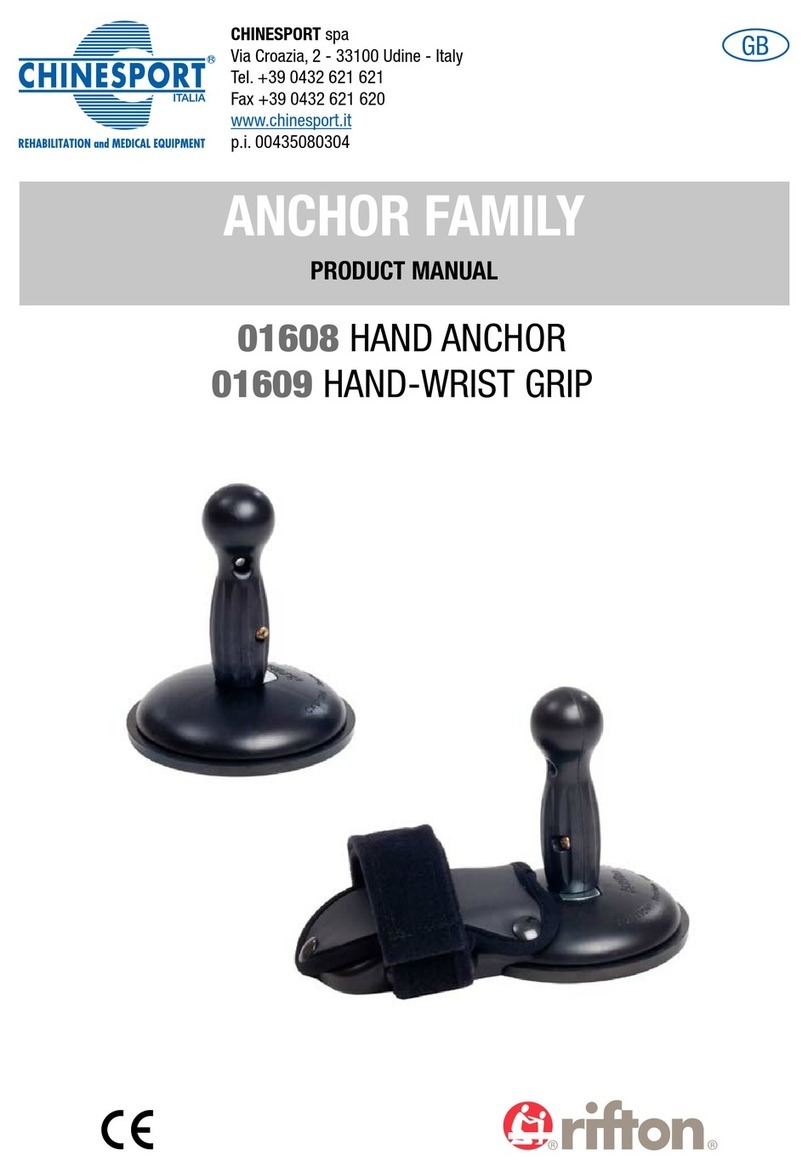
chinesport
chinesport Anchor Series User manual
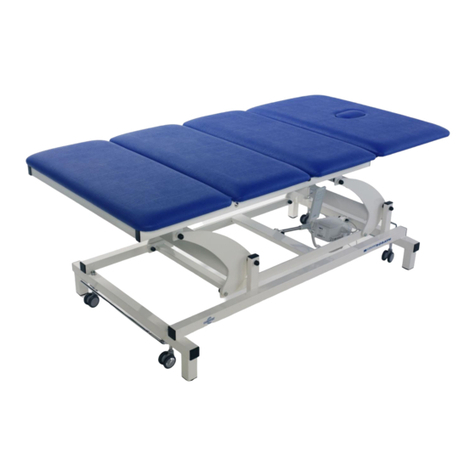
chinesport
chinesport Bobath LB3 Series User manual
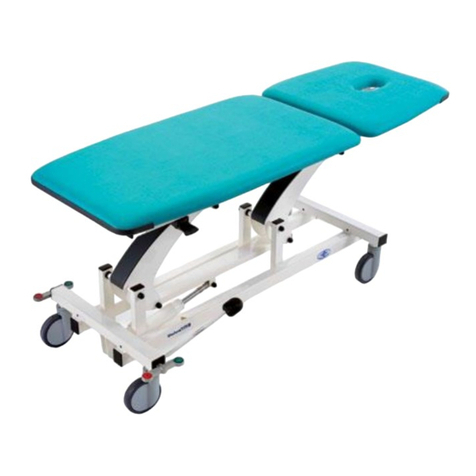
chinesport
chinesport UnionVisit LV1 User manual
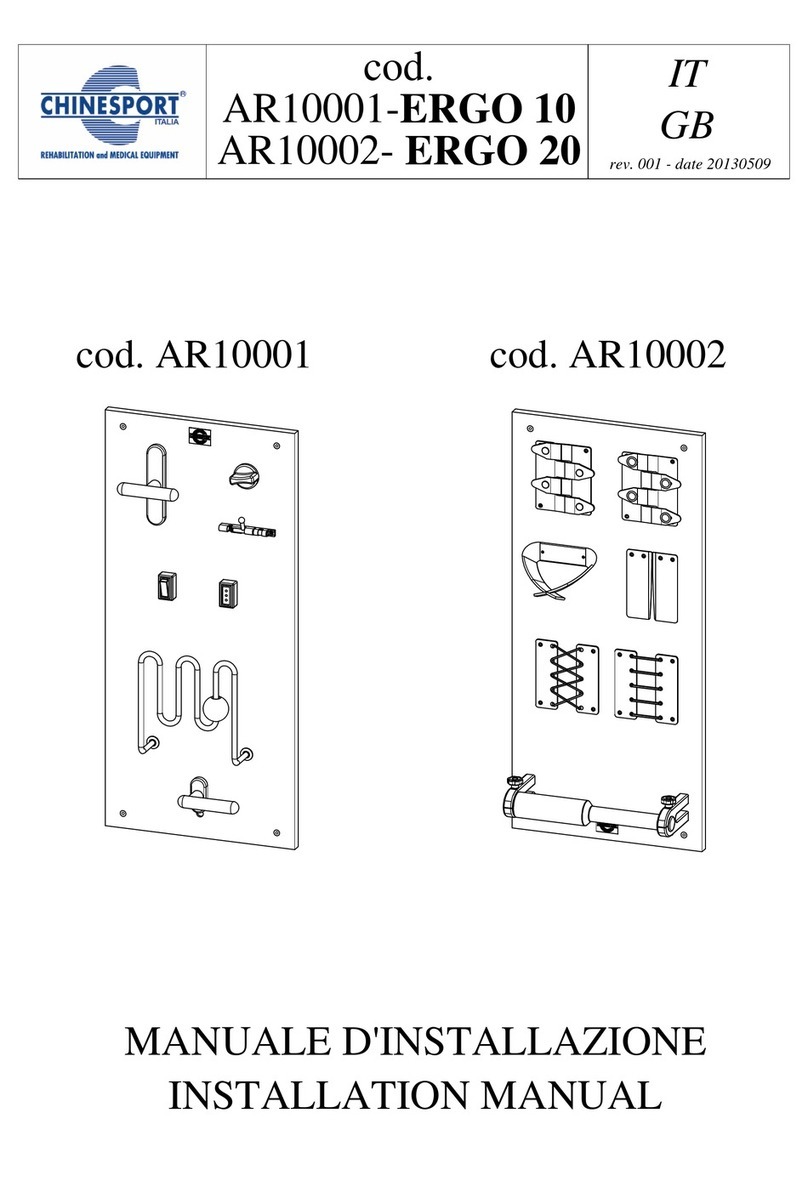
chinesport
chinesport ERGO 10 User manual
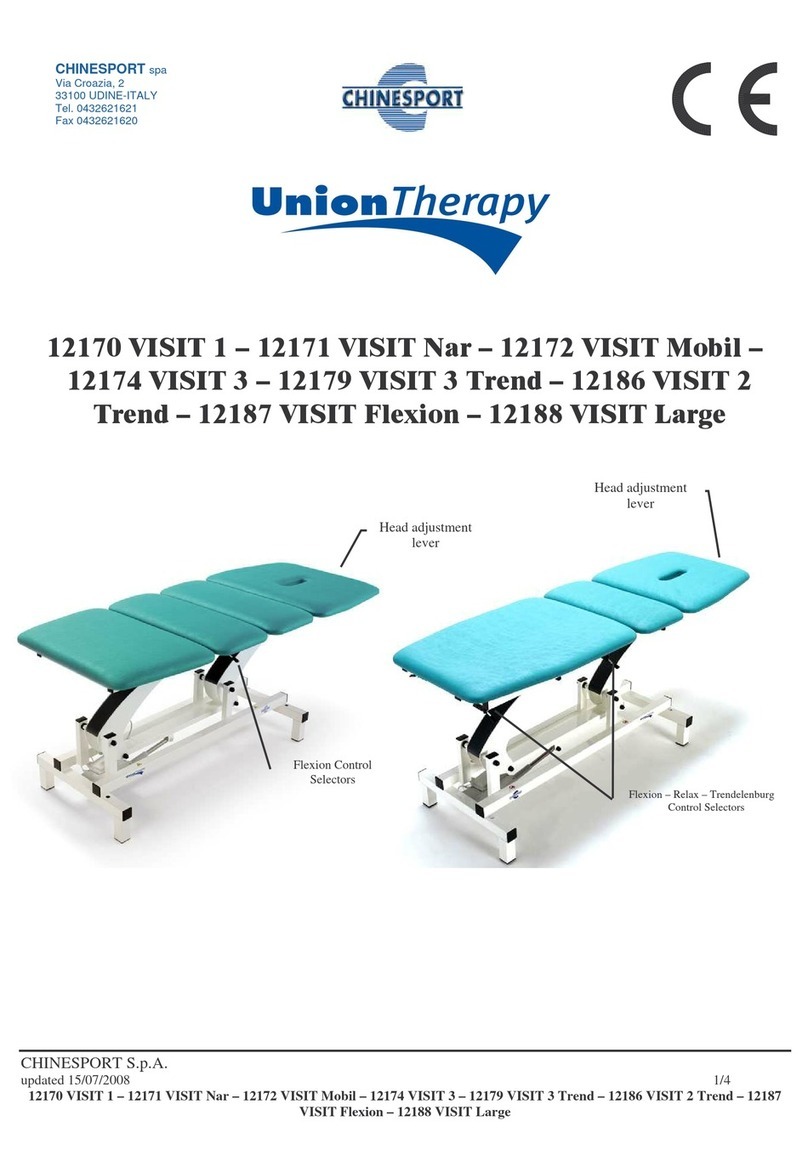
chinesport
chinesport Union Therapy VISIT 1 User manual
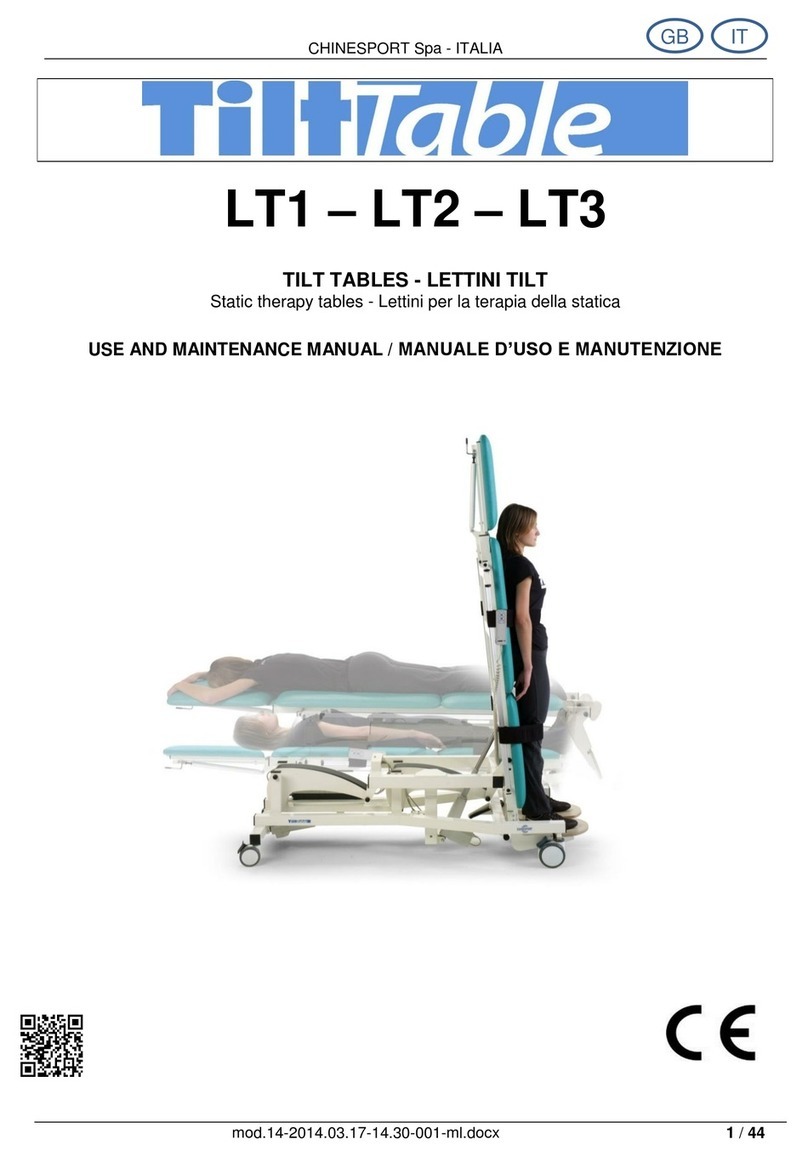
chinesport
chinesport TILTTable LT1 User manual

chinesport
chinesport ARTIPRESS User manual

